

Insider GCSE creative writing tips + 106 prompts from past papers
by Hayley | Mar 9, 2023 | Exams , Writing | 0 comments
Are you feeling a little bit twitchy about your child’s English GCSE writing task?
Sciences and humanities – although sometimes daunting in their content – seem a fair bet as ‘revisable’ topics. But the creative writing element of the English Language GCSE is less knowable and ultimately more of a frightening prospect for a student keen to do well.
Preparing for the GCSE writing task? You don’t need to do it alone.
We run a weekly online writing club which prepares students to write high-scoring content. Our “Higher” level club is designed to transform your writing so that you can ace the GCSE language paper.
What is the GCSE writing element of the GCSE Language Paper?
There are 5 key GCSE exam boards: AQA , OCR , Pearson Edexcel , WJEC Eduqas and CCEA . Each board sets their own papers which may appear much the same at first glance (bizarrely they all have a similar front cover layout and fonts). Certainly there is plenty of overlap between their mark schemes and the comments and tips they share in their Examiner Reports.
However, as with all your child’s other subjects, it is essential to know which exam board they are preparing for. You may be surprised to discover that schools pick and choose boards by subject, perhaps choosing AQA for chemistry and OCR for mathematics. Individual school departments have their own preferences. My brother teaches at a school where their English Literature and English Language exams have been split between two different boards. This is unusual though, not the norm!
What forms (question formats) can the test take?
It varies by board.
The AQA board has a writing task in their Question Paper 1 called Explorations in creative reading and writing . Students are given two prompts to choose between. The AQA board also has a second persuasive writing task in Paper 2 called Writers’ viewpoints and perspectives.
Jump ahead to AQA creative writing and persuasive writing prompts from past GCSE papers
The Pearson/Edexcel international iGCSE favoured by many UK private schools has two prompts to choose between for each section. The student is asked to complete a piece of transactional writing (perhaps a persuasive speech or an advertisement leaflet) and additionally a piece of imaginative writing.
Jump ahead to Pearson/Edexcel transactional writing and imaginative writing prompts from past GCSE papers
Interestingly, the WJEC Eduqas board favours non-fiction writing. Unit 2 Reading and Writing: Description, Narration and Exposition gives two prompts to choose between, for an account and an essay perhaps, and Unit 3: Reading and Writing: Argumentation, Persuasion and Instructional sets up a letter, or similar.
Jump ahead to WJEC Eduqas non-fiction writing prompts from past GCSE papers
The OCR board offers two prompts to choose between. One might be a talk for other students and the other might be a letter on a difficult subject .
Jump ahead to OCR creative writing prompts from past GCSE papers
The CCEA board has a writing task in called “ Writing for Purpose and Audience and Reading to Access Non-fiction and Media Texts” and a second writing task which offers a choice between personal writing and creative writing.
Jump ahead to CCEA persuasive writing, personal writing, and creative prompts from past GCSE papers
How long do students have to craft their piece of writing?
Creative writing tests are timed at either 45 minutes or 1 hour. The last thing your child will need is to prepare to write for an hour, only to find they have just three-quarters of an hour on the day. If in doubt, insist that they check with their teacher.
AQA students are given 45 minutes to produce their writing response. The introduction advises: ‘ You are reminded of the need to plan your answer. You should leave enough time to check your work at the end.’ What this means is that 30–35 minutes max is what’s really allowed there for the writing itself.
Pearson/Edexcel allows 45 minutes for each of the two writing tasks.
OCR students are given an hour to complete this section of their exam. The introduction states: ‘You are advised to plan and check your work carefully,’ so they will expect the writing itself to take 45–50 minutes.
How long should the completed GCSE writing task be?
Interestingly, although the mark schemes all refer to paragraphingthey don’t state how many paragraphs they expect to see.
‘A skilfully controlled overall structure, with paragraphs and grammatical features used to support cohesion and achieve a range of effects’ (OCR)
‘Fluently linked paragraphs with seamlessly integrated discourse markers’ (AQA)
Why? Because management of paragraph and sentence length is a structural technique available to the student as part of their writers’ toolkit. If the number of optimal paragraphs were to be spelled out by the board, it would have a negative impact on the freedom of the writer to use their paragraphs for impact or to manage the pace of the reader.
For a general guide I would expect to see 3 to 5 paragraphs in a creative piece and 5 paragraphs in a persuasive piece. Leaflets have a different structure entirely and need to be set out in a particular form to achieve the top notes of the mark scheme.
What are the examiners looking for when they are marking a student’s creative writing paper?
There are two assessment objectives for the writing itself:
- It has to be adapted to the form, tone and register of writing for specific purposes and audiences.
- It has to use a range of vocabulary and sentence structures, with appropriate paragraphing, spelling, punctuation and grammar.
As a GCSE English nerd, I really enjoy delving deeper into the Examiner Reports that each board brings out once the previous cohort’s papers have been marked. They are a fascinating read and never disappoint…
Within their pages, examiners spell out the differences they have spotted between the stronger and the weaker responses.
For example, a creative task set by the AQA board was to describe a photograph of a town at sunset. The examiners explained that some of the strongest responses imagined changes in the scene as darkness descended. They enjoyed reading responses that included personification of the city, and those that imagined the setting in the past, or the weariness of the city. Weaker candidates simply listed what was in the picture or referred directly to the fact it was an image. This chronological-list approach weakened the structure of their work.
No surprises that some weaker students relied heavily on conversation. (As an exam marker myself, I dreaded reading acres of uninspiring direct speech.)
Pearson/Edexcel explain that weaker persuasive pieces (in this case on the value of television) simply listed pros and cons rather than developed ideas fully to clarify their own opinions. The higher-level responses here were quirky and engaging, entertaining the reader with a range of appropriate techniques and making the argument their own.
What accommodations are possible for students who have specific learning difficulties?
The UK Government’s Guide for Schools and Colleges 2022: GCSE, AS and A Levels includes information about changes to assessments to support ‘disabled students.’ Their definition of disabled includes specific learning difficulties (dyslexia, dyspraxia, ADHD, ADD, ASD etc).
Exam boards can make a wide range of adjustments to their assessments. Some of the most common adjustments are:
- modified papers (for example, large print or braille exam papers)
- access to assistive software (for example, voice recognition systems or computer readers)
- help with specific tasks (for example, another person might read questions to the student or write their dictated answers)
- changes to how the assessment is done (for example, an oral rather than a written assessment, word-processing rather than hand-writing answers)
- extra time to complete assessments
- exemptions from an assessment
The exam board will expect paperwork to be in place where your child’s specific needs are formally reported by an appropriate professional (Educational Psychologist, Clinical Psychologist, Consultant). The report needs to be recent, but how recent is difficult to confirm.
If your child is likely to need adjustments to their access arrangements you will need to discuss this with their school in plenty of time before the exam itself.
A close friend of mine realised in the final few weeks before her son’s GCSE exams that his tinnitus would have a negative impact on his performance. She approached the school to ask if he might take his exams in a separate room to minimise noise disturbance. Unfortunately, it was far too late by then to apply, and her son was denied the request.
Your child’s school will explain the process for applying for special arrangements and will be able to advise you on what your expectations should be. Never presume your child will be given what they need – but plenty of requests are successful, so stay positive and make sure your paperwork is in order beforehand.
Tips and strategies for writing a high scoring GCSE creative writing paper:
1. learn the formats.
Know the different formats and conventions of the different GCSE writing tasks. There is a standard layout for a leaflet, for example, where including contact details and a series of bullet points is part of the mark scheme. Not knowing these conventions will knock back a student’s score.
2. Plan ahead
Prepare a planning structure for each of the written forms you might encounter during the exam. It may need to be flexed on the day, but it will banish fear of the blank page and allow you to get started.
3. Prepare sentence-openings
Familiarise yourself with appropriate sentence-openings for each type of GCSE writing task. Fronted adverbials of time and place will improve the quality of a creative piece, whereas access to varied and specific conjunctions might push up the mark of a transactional piece.
4. Check your speaking
Ask your family to check your speech at home. Every now and then try to flip a sentence into formal language, using more interesting synonyms for your usual spoken vocabulary. This will help you to write formally on paper, avoiding colloquialisms.
5. Forget finishing
Finishing is less important than you might imagine. Sloppy, hurried work is your enemy. GCSE examiners will follow your clear planning and mark you accordingly, even if you’ve not managed to complete that final paragraph.
6. Note the details
The question often gives additional information the examiner would like to see included. Note it in your plan to make sure it doesn’t get forgotten.
7. Start strong
Use your best sentence-opener at the start of each paragraph. It will set you up as someone to be taken seriously.
8. Cut back dialogue
Keep dialogue contained in a single paragraph. Focus on description of the speaker and their actions before noting the second character’s reply.
9. Revise
Do this by prepping work as above. Nothing beats it.
Would you like me to transform your child’s writing in my higher writing club?
Each week in my higher writing club , we spend 20 minutes on Zoom together. After the task has been introduced, the students write for 15 minutes. Next, they upload their work for 1:1 video marking.
There is no point prepping essays/creative pieces for the GCSE English Language exam if your child’s writing is poor. First, their scruffy presentation, attention to detail, punctuation, grammar and vocabulary need to be addressed.
After 2 months in the higher writing club your child’s written technique and fluency will be transformed by our 1–2-1 video marking system (consistent messaging is achieved by matching your child with their own teacher).
Each weekly activity is drawn directly from the GCSE English Language Subject Content and Assessment Objectives , published by the English Department of Education.
Here’s an example of a student’s writing, BEFORE they joined our club:

It is chaotic, poorly-presented and nonsensical. Letter-sizing is confused and the student is clearly anxious and repeatedly scribbling through small errors.
Below is the same student 2 months later:

Observe the rich vocabulary, authorial techniques (the jagged rocks are ‘like shards of broken glass’) and general fluency and sophistication.
Real and recent GCSE example questions/prompts from each of the 5 key exam boards
Aqa english language gcse questions, paper 2 writers’ viewpoints and perspectives:.
- ‘Our addiction to cheap clothes and fast fashion means young people in poorer countries have to work in terrible conditions to make them. We must change our attitude to buying clothes now.’ Write an article for a magazine or website in which you argue your point of view on this statement. ( Source )
- ‘People have become obsessed with travelling ever further and faster. However, travel is expensive, dangerous, damaging and a foolish waste of time!’ Write an article for a news website in which you argue your point of view on this statement. ( Source )
- ‘Cars are noisy, dirty, smelly and downright dangerous. They should be banned from all town and city centres, allowing people to walk and cycle in peace.’ Write a letter to the Minister for Transport arguing your point of view on this statement. ( Source )
- ‘All sport should be fun, fair and open to everyone. These days, sport seems to be more about money, corruption and winning at any cost.’ Write an article for a newspaper in which you explain your point of view on this statement. ( Source )
Paper 1 Explorations in creative reading and writing:
- A magazine has asked for contributions for their creative writing section. Either write a description of an old person as suggested by the picture below or write a story about a time when things turned out unexpectedly. ( Source )

- Your school or college is asking students to contribute some creative writing for its website. Either, describe a market place as suggested by the picture below or write a story with the title, ‘Abandoned’. ( Source )

- Your local library is running a creative writing competition. The best entries will be published in a booklet of creative writing. Either, write a description of a mysterious place, as suggested by the picture below or write a story about an event that cannot be explained. ( Source )

- A magazine has asked for contributions for their creative writing section. Either, describe a place at sunset as suggested by the picture below or write a story about a new beginning. ( Source )
OCR English Language GCSE questions
Paper: communicating information and ideas.
- Either, Write a post for an online forum for young people about ‘A moment that changed my life’.
- Or, You are giving a talk at a parents’ information evening about why all children should study science at school. Explain your views. ( Source )
- Either, Write a letter to a friend to describe a challenging and unpleasant task you once had to do.
- Or, Write a short guide for new workers about how to deal successfully with difficult customers. ( Source )
- Either, “Was it worth it?” Write an article for a magazine to describe a time when you had to do something difficult.
- Or, Write a speech for an event to congratulate young people who have achieved something remarkable. ( Source )
- Either, Write the words of a talk to advise pet owners how to make life more enjoyable for their pet and themselves.
- Or, Write an article for a travel magazine to describe your dramatic encounter with an animal. ( Source )
- Either, ‘How I prefer to spend my time.’ Write the words of a talk to young people about your favourite activity
- Or, Write a magazine article to persuade parents to allow their teenage children more freedom. You are not required to include any visual or presentational features. ( Source )
- Either, Write a talk for other students about a person you either admire strongly or dislike intensely
- Or, Write a letter to a friend to explain a difficult decision you had to make. ( Source )
Paper: Exploring effects and impact
- Either, Hunger satisfied. Use this as the title for a story.
- Or, Write about a time when you were waiting for something. ( Source )
- Either, The Taste of Fear Use this as the title for a story.
- Or, Write about a time when you were exploring a particular place. ( Source )
- Either, Alone. Use this as the title for a story.
- Or, Describe a time when you found yourself in a crowd or surrounded by people. ( Source )
- Either, Land at Last. Use this as the title for a story.
- Or, Imagine you have visited somewhere for the first time and are now reporting back on your experience. ( Source )
- Either, The Playground Use this as the title for a story
- Or, Write about a memory you have of playing a childhood game. ( Source )
- Either, It seemed to me like I had been magically transported. Use this as the title for a story.
- Or, Describe a place where you have felt comfortable. ( Source )
Pearson Edexcel English Language iGCSE questions
Paper 1: transactional writing.
- Either, ‘In our busy twenty-first century lives, hobbies and interests are more important than ever.’ Write an article for a newspaper expressing your views on this statement.
- Or, ‘We are harming the planet we live on and need to do more to improve the situation.’ You have been asked to deliver a speech to your peers in which you explain your views on this statement. ( Source )
- ‘ Zoos protect endangered species from around the world.’ ‘No wild animal should lose its freedom and be kept in captivity. Write an article for a magazine in which you express your views on zoos.
- Write a review of an exciting or interesting event that you have seen. ( Source )
- Your local newspaper has published an article with the headline ‘Young people today lack any desire for adventure’. Write a letter to the editor of the newspaper expressing your views on this topic.
- ‘The key to success in anything is being prepared.’ Write a section for a guide giving advice on the importance of preparation. ( Source )
- You and your family have just returned from a holiday that did not turn out as you expected. Write a letter to the travel agent with whom you booked your holiday, explaining what happened.
- A magazine is publishing articles with the title ‘Friendship is one of the greatest gifts in life’. Write your article on this topic. ( Source )
- ‘Important lessons I have learned in my life.’ You have been asked to deliver a speech to your peers on this topic.
- Your local/school library wants to encourage young people to read more. Write the text of a leaflet explaining the benefits of reading. ( Source )
- ‘Most memorable journeys.’ A website is running a competition to reward the best articles on this subject. Write an article for the competition about a memorable journey.
- ‘Cycling is one form of exercise that can lead to a healthier lifestyle.’ Write a guide for young people on the benefits of exercise. ( Source )
- ‘Television educates, entertains and helps global understanding.’ ‘Television is to blame for society’s violence and greed and delivers one-sided news.’ You have been asked to deliver a speech in which you express your views and opinions on television.
- ‘Choosing a career is one of the most important decisions we ever make.’ Write the text of a leaflet that gives advice to young people on how to choose a career. ( Source )
- Write the text for a leaflet aimed at school students which offers advice on how to deal with bullying.
- A museum is planning to open a new exhibition called ‘Life in the Twenty-First Century’. ( Source )
Paper 2: Imaginative writing
- Write about a time when you, or someone you know, enjoyed success
- Write a story with the title ‘A Surprise Visitor’.
- Look at the two images below. Choose one and write a story that begins ‘I did not have time for this’ ( Source )

- Write about a time when you, or someone you know, challenged an unfair situation.
- Write a story with the title ‘Bitter, Twisted Lies’.
- Look at the two images below. Choose one and write a story that begins ‘It was a new day …’ You may wish to base your response on one of these images. ( Source )

- Write about a time when you, or someone you know, visited a new place.
- Write a story with the title ‘The Storm’
- Look at the two images below. Choose one and write a story that ends ‘I decided to get on with it.’ ( Source )

- Write about a time when you, or someone you know, saw something surprising.
- Write a story with the title ‘The Meeting’.
- Look at the two images below. Choose one and write a story that starts ‘Suddenly, without warning, there was a power cut.’ ( Source )

- Write about a time when you, or someone you know, went on a long journey.
- Write a story with the title ‘A New Start’
- Look at the two images below. Choose one and write a story that begins ‘I tried to see what he was reading. ( Source )

- Write about a time when you, or someone you know, felt proud.
- Write a story with the title ‘The Hidden Book’.
- Look at the two images below. Choose one and write a story that begins ‘It was like a dream’ ( Source )

- Write about a time when you, or someone you know, had to be brave
- Write a story with the title ‘Everything Had Changed’
- Look at the two images below. Choose one and write a story that begins ‘It was an unusual gift’. ( Source )

WJEC Eduqas English Language GCSE questions
Unit 2 reading and writing: description, narration and exposition.
- Write an account of a time when you enjoyed or hated taking part in an outdoor activity.
- “It’s essential that more people are more active, more often.” (Professor Laura McAllister, Chair of Sport Wales) Write an essay to explain how far you agree with this view, giving clear reasons and examples. ( Source )
- Describe an occasion when you did something you found rewarding.
- Famous chefs such as Jamie Oliver and Mary Berry have spoken of the need for better food and better education about food in schools. Write an essay to explain your views on this subject, giving clear reasons and examples. ( Source )
- Write an account of a visit to a dentist or a doctor’s surgery.
- NHS staff, such as doctors and nurses, provide excellent service in difficult circumstances. Write an essay to explain your views on this subject, giving clear reasons and examples. ( Source )
- Write an article for a travel magazine describing somewhere interesting that you have visited.
- You see the following in your local newspaper: ‘Young people are selfish. They should all be made to volunteer to help others.’ Write an essay to explain your views on this subject, giving clear reasons and examples. ( Source )
- Describe an occasion when technology made a difference to your life.
- Write an account of a time you were unwilling to do something. ( Source )
- Describe a time when you faced a challenge
- Write an essay explaining why charity is important, giving clear reasons and examples. ( Source )
- Write an account of a time when you did something for the first time.
- “It’s time for us to start making some changes. Let’s change the way we eat, let’s change the way we live, and let’s change the way we treat each other.” Tupac Shakur Write an essay on the subject of change, giving clear reasons and examples. ( Source )
- “School uniform is vitally important in all schools.” Write an essay explaining your views on this, giving clear reasons and examples.
- Describe a time when you had to create a good impression. ( Source )
Unit 3: Reading and writing: Argumentation, persuasion and instructional
- Your school/college is considering using more Fairtrade items in its canteen. Although this will help to support Fairtrade farmers, it will mean an increase in the price of meals. You feel strongly about this proposal and decide to write a letter to your Headteacher/Principal giving your views. ( Source )
- Increasing litter levels suggest we have lost all pride in our beautiful country. Prepare a talk for your classmates in which you give your opinions on this view. ( Source )
- Write a guide for other students persuading them to stay safe when using social media and the internet. ( Source )
- According to your PE teacher, ‘Swimming is the very best form of exercise.’ You have been asked to prepare a talk for your classmates in which you give your views about swimming. ( Source )
- You read the following in a newspaper: ‘Plastic is one of the biggest problems faced by our planet. Why would we use something for a few minutes that has been made from a material that’s going to last forever?’ Write a letter to the newspaper giving your views on the use of plastic. ( Source )
- “People today never show enough kindness to one another. We must make more effort to be kind.” Write a talk to give on BBC Wales’ new programme Youth Views persuading young people to be kind to others. ( Source )
- ‘We have enough problems in the world without worrying about animals.’ Write an article for the school or college magazine giving your views on this statement.
- You would like to raise some money for an animal charity. Write a talk for your classmates persuading them to donate to your chosen charity. ( Source )
CCEA English Language GCSE questions
Unit 1: writing for purpose and audience and reading to access non-fiction and media texts.
- Write a speech for your classmates persuading them to agree with your views on the following issue: “Young people today are too worried about their body image.” ( Source )
- Write an article for your school magazine persuading the readers to agree with your views on the following question: “Should school uniform have a place in 21st century schools?” ( Source )
- Write a speech for your classmates persuading them to agree with your views on the following question: “Are celebrities the best role models for teenagers?” ( Source )
- Write an article for your school magazine persuading the readers to agree with your views on the following statement: “Advertising is just another source of pressure that teenagers don’t need!” ( Source )
Unit 4: Personal or creative writing and reading literacy and non-fiction texts
- Either, Personal writing: Write a personal essay for the examiner about what you consider to be one of the proudest moments in your life.
- Or, Creative writing: Write your entry for a creative essay writing competition. The audience is teenagers. You may provide your own title. ( Source )
- Write a personal essay for the examiner about an experience that resulted in a positive change in your life.
- Write a creative essay for the examiner. The picture below is to be the basis for your writing. You may provide your own title. ( Source )

- Personal writing: Write a speech for your classmates about the most interesting person you have ever met.
- Creative writing: Write a creative essay for your school magazine. The picture below is to be the basis for your writing. You may provide your own title. ( Source )

- Personal writing: Write a personal essay for the examiner describing your dream destination.
- Creative writing: Write a creative essay for publication in your school magazine. The picture below is to be the basis for your creative writing. You may provide your own title. (Source)

Get 1:1 support and personalized feedback on your GCSE creative writing practice
For 1–2-1 writing support for your pre-GCSE child, join the Griffin Teaching Higher Writing Club—online weekly writing classes specifically tailored to English GCSE creative writing preparation.
In just 20 minutes per week and their writing will be transformed.

70 Picture Prompts for Creative Writing (with Free Slides)
Share this post!
Visual writing prompts help young writers generate new ideas and overcome writer’s block. We’ve put together 70 picture prompts for creative writing that you can use in your writing centers or lesson plans to get your students’ creative juices flowing.
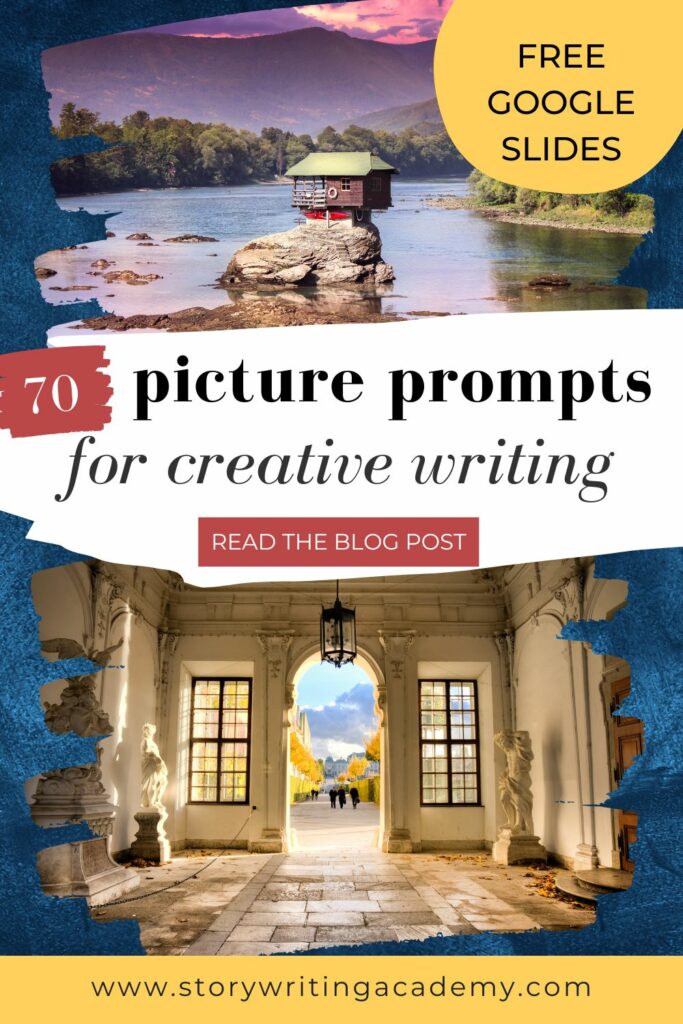
Picture Writing Prompts for All Ages
Writers of all ages and experience levels can get stuck thinking about what to write. Writer’s block is not just a challenge for reluctant writers. Even professional writers have days when they feel less than inspired.
Visual prompts can result in a vast array of story ideas. A single image viewed by ten writers will result in ten completely different stories. Even if you use verbal cues to get students thinking about the picture, each student will still write a unique response to the image.
Visual creative writing prompts are fantastic for elementary school because younger students often relate more to a pictorial prompt than a written one, but don’t shy away from using these with high school and middle school students as well. Pictures make a fun alternative to your typical writing prompts and story starters and can help shake up your regular routine.
How to Use Picture Prompts for Creative Writing
There’s no limit to the ways you can use writing prompts. Here are some of our favorite ways to incorporate image prompts into your weekly lesson plans .
- Writing Center. Print cards or writing pages with these images on them and put them in a writing center for your students to discover at their own pace.
- Specific Skills. Use story picture prompts to help kids work on specific writing skills. For example, you could work on descriptive writing by having them describe the setting of the picture in detail. Or you could work on character development by having them make up a history for a person in a picture.
- Warm-up Activity: You could pop the pictures into Google slides and project an image on a screen or whiteboard for the first fifteen minutes of class and have students work on a short story as soon as they enter the class.
No matter how you decide to use them—whether at home or in the classroom—photographic writing prompts are a great way to cultivate a daily writing habit and encourage kids to explore new topics.
70 Pictures for Writing Prompts
We’ve selected 70 of the most interesting pictures we could find for this exercise. When choosing photos for writing prompts, we look for high-quality photos with intriguing subject matter, but we try to go beyond that. We want to share images that suggest a story, that make the viewer ask questions and wonder why things are the way they are.
We want to feel propelled to explore questions like, What happened before the photo that led to this moment? What are we witnessing in this photo? What’s about to happen?
A photo doesn’t make much of a story starter if it doesn’t suggest that there might be a bigger picture lurking beneath the surface.
We hope you and your students love these picture prompts for creative writing as much as we do. If you love them, go ahead and scroll to the bottom to grab your own copy.
We’ve included a couple of questions with each picture that you could use to spark pre-writing conversations in your classroom, which can be helpful when working with younger students who might need a little more direction.

Sign Up for Your FREE Picture Writing Prompt Slides
You have successfully joined our subscriber list.
Whose cat is this? What is he looking at? Where is he?

What is the owl thinking about? Is he alone? What does he hope to eat for dinner?

Who are these frogs? What is their relationship with each other? Why are they taking photos?

How did the dog get a phone? Why is he taking selfies? What is he doing with the pictures he takes?

This cat doesn’t look too happy. What’s bugging him? Did he get too many phone calls or is he waiting on an important call that’s taking too long to come?

What do these chicks think of the dog? What does the dog think of the chicks? Do you think they can communicate with each other? If so, what would they say?

Where do these lemurs live? What are they looking at? What is something unusual that might happen to them?

What is this fox doing? Is he yawning and stretching or is he trying to scare someone away? What kind of mischief does he like to get up to?

Is this wolf alone? If not, who is with him? What is he planning to do? Does he have a family to feed or protect?

What is this child doing on the laptop? Can he actually read and type or is he just playing? If he can read and type, how did he learn that at such a young age? What other cool things can he do?

Where is this woman? Is she lost? How did she get to this street? What interesting things might she discover as she explores this new city?

Why is the dog wearing glasses? Can he see through them? What are he and the girl doing? How does he feel about it?

Who are these two little boys? What is their relationship with each other? What is the teddy bear’s story?

Who are these children? Why are they running? Is it a race or are they playing a game? Who’s going to win?

Whose horse is this? Does the little boy own it or does he just visit it? Can the horse talk? How does the boy feel when he’s with the horse?

What is this boy reading? Does the book have magical powers? Does the boy? Do the stories in the book become real or does something else special happen?

Where is this man? How did he get there? What is he looking for?

Who is walking over the bridge? What’s on the other side? Is it worth the risk?

What are these people doing on the elephant? Where are they? Are they tourists or is the elephant their pet? What would life with an elephant be like?

Who made this map? It looks old. Has it been hidden away for a long time? Who discovered it and how? What does it lead to?

Whose typewriter is this? What important or secretive thing might they be working on? What could happen if the wrong person finds their work?

Who are these three stuffed animals? Are they living? What is their story?

Whose ukulele is this? Why did they leave it here? Who might find it?

Where is the owner of the bike? Where does this path lead? What if the bike’s not there when the owner returns?

Whose shoes are these? Why did they leave them here? Why are they so dirty?

Who was reading the newspaper? What was the most interesting thing they read? Where have they disappeared to?

Who put this sign on the old truck? What do you think of it? How did the truck end up in its current condition and location?

Who set the table? Who are they expecting? What special occasion are they celebrating? What could go wrong?

Whose birthday cake is this? Are they having a party? Who is there? Who did they want to have there that didn’t show up?

Who lives here? How do they access their home? What is their life like?

Who built the igloo? Where is it? How does it feel to spend the night inside it?

What is the history of this castle? Who lives in it now? Does it have any special or magical features?

Is this barn abandoned or do people live on the property? What kind of animals might live here? How do they keep themselves entertained?

What is it like living on a houseboat? What kind of community do you think forms among the neighbors? Imagine you live on one of these boats and think about how your daily life might change. What interesting things could you do if you lived here? What would you miss the most?

Where is this hut? Who lives here? What mystery might unfold if a stranger came knocking at their door?

What is this lighthouse called? Who runs it? How often do they leave? What is the most memorable experience they’ve had as a lighthouse operator?

How did this house get here? Does anyone live in it? What would life be like here?

Where is this festive street? Are the people there celebrating something? Where is everybody?

Who lives here? How did they build this house? Are they hiding from something? What does it look like inside?

Whose notebook is this? Why did they leave it here? What’s written in it and how might it change the life of the person who finds it?

What are these women doing? What are they supposed to be doing? Will they be in trouble if they get caught?

Who might be represented in this statue? Why is she being pulled by lions? What amazing things might she have done to deserve a statue in this prominent place?

Where is this? Who is riding in the hot air balloons? Where are they going and why?

How old is this tree? Where is it? What are some of the most fascinating stories it could tell?

Where is this carousel? Who is riding it? Can you think of a special or strange story about how it came to exist in this particular place?

What are these people thinking about? What’s at stake for them? What happens if one of them sneezes?

Where are these penguins? What are they talking about? Which one of them is the leader?

What is this place? Was it designed to be open like this or was it once part of someone’s home or a public building? How have people’s opinions of this place changed over time?

Who are these kids? Is this what they’re supposed to be doing? What happens when their teacher sees them?

Who is supposed to ride in this boat? Where are they going? Will they make it there?

Is this plane special to someone? What did they have to do to get it/build it? Where will they fly to in it?

Who decorated this train car? Which passengers will fill it up? What will they talk about?

Whose skis are these? Why are they sticking out of the snow? How did their owner get down the mountain without them?

Where does this gondola go? Who rides it? How does it feel to ride it?

Who’s driving the monster truck? Why is it at the beach? What is it going to crush? Who is watching?

Where is the boat going? Who is on it? What is their mission?

What city is the helicopter flying over? Why? Is the driver looking for something specific or do they have a special delivery?

What’s the little boy doing in the boat? Is he alone or is someone with him? Where is he trying to go?

Who is in the sub? What’s it like inside? What are they doing?

Whose book is this? What’s it about? What’s happening to it?

How did that piece of land with the house on it break off from the rest of the world? Why? Where is it going? Is anyone in the house?

Who is this girl? Where is she? Who is she shooting at?

Where does this scene take place? Is the lizard/dragon good or bad? What is its relationship with the girl?

What do these books represent? What kind of world is this? What (or who) is inside the books?

What are these dinosaurs discussing? Where are they? What do they do for fun?

Whose cottage is this? Do they still live there? If not, where have they gone? If so, what do they do there?

What is the moth thinking about? Is it alone? What’s the biggest challenge it faces in this moment?

Who is the owl looking at? Has it read these books? What is its greatest talent?

Where are these trees? Why are they pink? Do they have any special powers or features?

What do you think? Which kind of pictures do you like best for creative writing prompts ? Let us know in the comments.
Thursday 9th of May 2024
I love this website because I was using it with my kindergartners and it work so so so well!!!!
Monday 20th of May 2024
That's wonderful. Thanks for sharing!
Tuesday 5th of March 2024
I LOVE these! My daughter has always struggled with written story prompts and an internet search this week convinced me of the value of picture prompts for reluctant readers/writers (https://youcanjournal.com/journal-picture-prompts/ if you're interested!). I'll definitely be using these to help improve her writing skills. Thanks so much!
Tuesday 26th of December 2023
I think the idea of using picture prompts is a great idea. It initiates oral language thus building vocabulary. It allows lends itself to students working in small groups to stimulate new ideas. The prompts engage the students and gives the teacher the opportunity to focus on specific writing skills.
luke elford
Wednesday 13th of December 2023
cloey mckay
Tuesday 17th of October 2023
I tried this with myself and my 6th-grade students, and they love it. it gives room for so much creativity.
Privacy Overview
- Student Hacks
- Studying & Revision
- Work & Jobs
10+ GCSE creative writing ideas, prompts and plot lines

Getting a good GCSE creative writing plot going can be difficult, here are some ideas to help you out.
Ahead of your exams, here are a selection of GCSE creative writing ideas and prompts to hopefully provide some inspiration.
The Lost Timepiece
Prompt: In an old, dusty attic, a teenager discovers a mysterious pocket watch that doesn’t seem to tell the correct time.
Potential Story Directions:
- The watch could transport the teenager to different moments in history whenever it's wound.
- The watch might belong to a long-lost relative, leading to a family mystery.
- The watch could be counting down to a significant event, and the protagonist must figure out what is about to happen.
The Secret Garden Door
Prompt: Behind the overgrown ivy in the school's garden, a student finds a door that wasn't there before.
- The door could lead to a magical world, offering an escape from everyday life but with challenges of its own.
- It might be a portal to the past, showing the school's history and secrets.
- The door could be a metaphorical passage to self-discovery, revealing hidden aspects of the character’s personality.
The Last Message
Prompt: A character receives a mysterious message in a bottle on the beach, written in a cryptic language.
- Deciphering the message could lead to an adventure, perhaps a treasure hunt or a rescue mission.
- The message might be from a distant land or time, offering insights into an ancient or futuristic world.
- It could be a personal message from someone significant in the character’s past, triggering a journey of emotional growth.
Midnight at the Museum
Prompt: A night guard at a museum notices that the exhibits come to life after midnight.
- The guard could interact with historical figures, learning about history firsthand.
- There might be a plot to steal an exhibit, and the living exhibits help to thwart it.
- The phenomenon could be linked to a supernatural event or an ancient curse that needs resolving.
The Forgotten Melody
Prompt: A pianist discovers an old, unplayed piano in a neglected music room that plays a melody no one seems to recognize.
- The melody could be a key to unlocking forgotten memories or a hidden past.
- It might be a magical melody, having various effects on listeners.
Each of these prompts offers a starting point for creative exploration, allowing students to develop their storytelling skills in imaginative and engaging ways.
Galactic Storm
Prompt: Astronauts on a mission to a distant planet encounter a bizarre, otherworldly storm.
- The storm could have strange, mind-altering effects on the crew.
- It might be a living entity, communicating in an unprecedented way.
- The crew must navigate through the storm to discover a hidden aspect of the universe.
Unearthed Powers
Prompt: A teenager suddenly discovers they have a supernatural ability.
- The power could be a family secret, leading to a journey of self-discovery.
- It might cause conflict with friends and society, forcing the protagonist to make difficult choices.
- The ability could attract unwanted attention, leading to a thrilling adventure.
Reflections of Reality
Prompt: A story that mirrors a significant real-life experience involving friendship or a pet.
- The story could explore the depth of human-animal bonds or the complexities of friendship.
- It might involve a heartwarming journey or a challenging ordeal.
- The protagonist learns valuable life lessons through these relationships.
Chronicle of Times
Prompt: A character discovers a way to travel through time.
- Traveling to the future, they encounter a radically different world.
- In the past, they might inadvertently alter history.
- The story could explore the moral and emotional implications of time travel.
Apocalyptic Event
Prompt: A natural disaster of unprecedented scale threatens humanity.
- The story could focus on survival, resilience, and human spirit.
- It might involve a journey to avert the disaster.
- The narrative could explore the societal changes that occur in the face of such a disaster.
The Unsolved Case
Prompt: A detective starts investigating a complex and mysterious murder.
- The investigation uncovers deep secrets and conspiracies.
- The detective's personal life might intertwine with the case.
- The story could have a surprising twist, challenging the reader's expectations.
Retold Fable
Prompt: Modernize a classic fable or story, such as the Boy Who Cried Wolf, in a contemporary setting.
- The story could be set in a modern city, exploring current social issues.
- It might be told from a different perspective, offering a fresh take on the moral of the story.
- The narrative could blend the original fable with current events, creating a powerful commentary.

Forbidden Love
Prompt: Two characters from vastly different worlds fall in love, against all odds.
- Their love could challenge societal norms and expectations.
- The story might explore the sacrifices they make for each other.
- It could be a journey of self-discovery and acceptance in the face of adversity.
Thomas Brella is the founder of Student Hacks, starting the website in 2013 while studying at the University of Brighton to share tips and tricks on life as a cash-strapped student. He's now spent over 10 years scoping out the best ways to live on a budget
Follow on Twitter
Like on facebook.

- Creative Writing /
Writing prompts for English Language GCSE
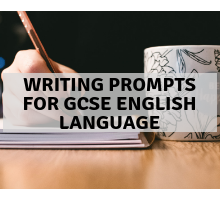
Below I have shared 5 different types of writing prompts for you to use this week with your classes! If you are preparing your classes for GCSE English Language, or any type of creative writing, then these writing will be great for you to use!
Writing a room
Choose one room in your house and list everything that can be: seen, smelt, heard, felt (and tasted).
Write 100 words describing this room using only sensory imagery .
When you have finished writing, ask yourself this question – were you able to create a sense of the room with this tightly controlled word count? If not, consider why? Look at your nouns and adjectives, are they specific and precise? Did you waste words? Make just 5 changes and see if this improves your writing.
Slow your writing down
Both of these writing prompts are great for s-l-o-w writing . Slow writing is the opposite of a quick write. The idea is to write slowly , precisely , carefully , selecting each word intentionally . Slow writing can take 5 minutes with one sentence and 30 minutes with a paragraph. Write these moments of action (or inaction), imagine them in slow-motion . Try and recreate this in your description.
- Imagine your family is eating a meal together. Someone knocks over a drink and it spills across the table. Describe this moment.
- You are waiting . Probably bored . Perhaps a bit annoyed . Walk your reader through the tick, tick, tick of your watch as you wait. It is sunset and you are waiting for your friends, who are late. Describe the setting as the day moves towards darkness.
Writing character
- Sit somewhere public (the cafeteria at school is perfect for this).
- Describe the faces of 5 strangers, show personality through expressions and gestures .
- When you have your 5 descriptions, create some conflicts between them. One character bumps into another character. Or one character asks another for help . How would your character react based on the personality you created for them?
- Find a picture of a new-born baby . Describe in detail its face and features.
- Write a precise description of the feeling of grass beneath bare feet .
- Write a precise and detailed description of a seashell . Ensure every shape and ridge is defined.
12 writing tasks in 12 days
This one is super easy. You can just click here and download the free PDF – inside you will find 12 descriptive writing tasks for your students to complete over 12 days!
So you can download this free one-page worksheet of writing tasks here !
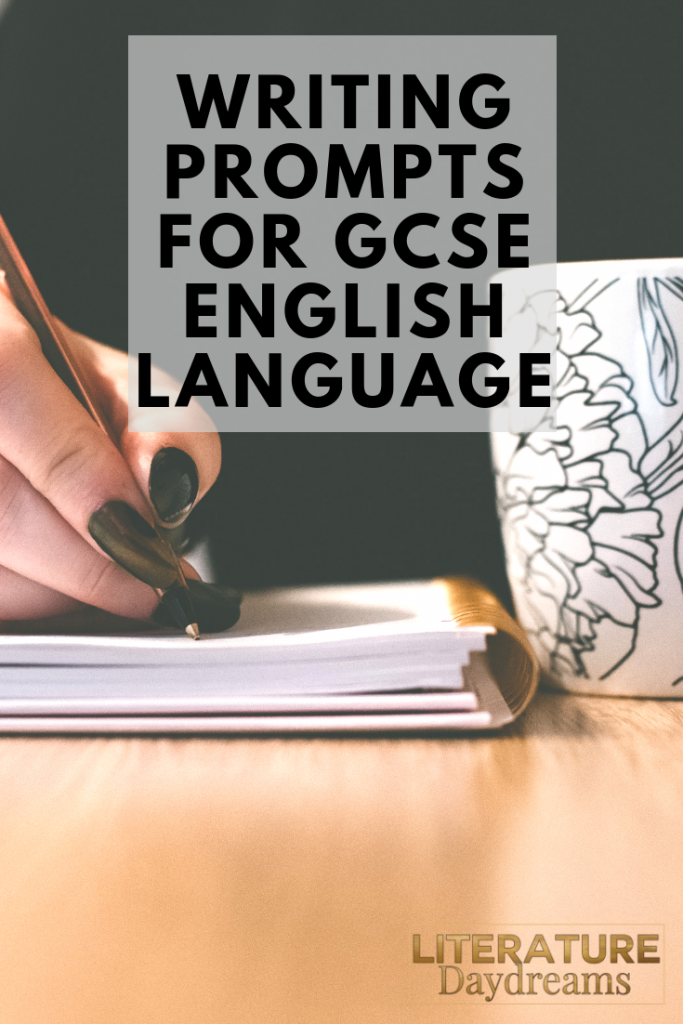
If you love these writing prompts, then sign up for my weekly “Writing on Wednesday” email. Each week I send out fresh and fun writing prompts to all my email friends! Just sign up below.

Love Creative Writing in your classroom!
Are you ready for dynamite descriptive writing in your classroom download your free 3-step guide now.
*I send emails with teaching tips, tricks, and free resources to my subscribers regularly. I value your privacy and you can learn more about how I handle your data in our private policy . You can unsubscribe at any time.
Click Here to Leave a Comment Below
Leave a Reply:
Save my name, email, and website in this browser for the next time I comment.
- Previous post
- Share full article
Advertisement
Supported by
Picture Prompts
A Year of Picture Prompts: Over 160 Images to Inspire Writing

By Michael Gonchar and Katherine Schulten
- June 1, 2017
Update, Feb. 15, 2019: Learn more about how to use our 1000s of writing prompts by watching our free on-demand webinar: “ Give Them Something to Write About: Teach Across the Curriculum With New York Times-Inspired Daily Prompts. ”
This school year we added a new feature to our daily lineup of student activities. Called “ Picture Prompts ,” these short, accessible, image-driven posts feature photographs and illustrations from The Times, and invite a variety of written or spoken responses — from creative storytelling to personal narrative to constructing an argument or analyzing what a work of “op-art” might be saying.
Teachers tell us they use these prompts to inspire student writing — whether in their journals , as a timed opportunity or to practice inferring meaning “without worrying about getting the right or wrong answer.”
They also use them with a variety of learners, from high school to middle or elementary school students to English Language Learners of all ages. As one teacher put it, she uses them “for helping teenagers to start talking to each other. ”
Below, we’ve categorized the 160+ prompts we published during the 2016-17 school year based on the type of writing they primarily encourage students to do. All are still open for comment. Plus, we have a lesson plan on how to teach with Picture Prompts, along with other Times images , in case you’re looking for more inspiration.
If you use this feature with your students, or if you have other ideas for how to use images and writing prompts with students, let us know in the comments section.
What’s the story behind this photo? Use your imagination.
Floating You and Me Mysterious Doors Underwater One Night Dog at the Counter Cats in Clothes Sneaker Collection On the Street Beware of Zombies Big Numbers Pool of Sprinkles Secret Spaces A Narwhal’s Life Inspiration From an Illustration Dancers in Masks Frozen Fish Go-Karting Cards in the Air Opening the Door The Badger and the Cow Icebergs Dogs and Stars
Share experiences from your own life.
Sneakers Flavors of Home Toy Trends Meteor Shower In the Park Sports Fans A Trip to Mars Confronting Stereotypes A Remarkable Find Optimists and Pessimists Simone Biles $100 A Favorite Store Kindness Across Divides Winter Comforts Christmas Lights The Celebrity Next Door A Celebrated Tree Kindergarten in a Stadium Advice for New Students Favorite Olympic Athletes Social Media and Body Image Growing Old Staycations An Act of Kindness Fashion Week’s Street Style Reading and Diversity The Effects of Living to Age 122 Distractions Terrifying Encounters Give a Country a Compliment Smashing Pumpkins Day of the Dead World Series Champions Extreme Sports Breathing and Stress Thanksgiving Traditions Giving Tuesday Magic Shoes Breaking Barriers Favorite Mobile Games Your Holiday Traditions National Pride Public Art Fascinating Animals Offbeat Interests Repair Cafes Lunar New Year Protesting Healthy Habits Super Bowl Spending Valentine’s Day Winning Streak Virtual Reality Old-School Skills Dinner An Early Spring 360 Degrees of Holi Blizzards Then and Now Bucket List Good Conversations Escape Steps in a Day Your Five Senses YouTube Stars Losing Things Shoelaces A Good Night’s Sleep Wristwatches 3-D Printing No Fear Exhibits for a Museum of Failure Dresses at the Met Gala Fidget Spinners On the Billboard Chart Water Escapes Forest Kindergarten Body Image Ariana Grande A Mother’s Help Dream Houses Fasting and Food for Ramadan ‘Dear Evan Hansen’ Dancing in the Streets A Comic Take on the News The N.B.A. Finals ‘Wonder Woman’
What do you think this image, chart or cartoon is saying?
In Your Head Money and Happiness Moving and Sitting Policing Large Man Speech Bubble Above and Below Lady Liberty #2 Across the Fence Blue and Red Map, 2012 Red and Blue Map, 2016 Thumbs Up, Thumbs Down Lady Liberty #1 In Case of Emergency Break Glass The American Dream ‘Check-In’ Norman Rockwell’s ‘Four Freedoms’ Hair-Raising Answers to an Open-Ended Question Shredding Blue and Red Mr. Olympia A Seasonal Scene 100 Days Social Media
What’s your opinion on this issue?
Device Addiction? Self-Driving Cars An Invention the World Needs Creepy Clowns Beyoncé at the V.M.A.s Parenting Robot Greeters Arriving at Ellis Island Colin Kaepernick’s Protest Pennies Feminism An 18-Karat Throne Mandatory Voting? Tattoos A Hug Seen Around the World Mermaid School Anger Rooms Dabbing in Congress Hitler and History Gender and ‘Genderless’ Solving Global Problems Fashion-Show Diversity The Role of Public Broadcasting Children and Cell Phones U.F.O.s ‘A Man Needs His Nuggs’ Parenting Skills
Images for STEM Classes: Questioning, Explaining and Solving

A Fire Hose of Lava Math Problem Fall Foliage Basketball Dreams Insect Mysteries Goats in a Tree
Want more writing prompts?
We also have over 1000 Student Opinion questions we’ve asked over the years, gathered together in two lists: 650 prompts for narrative and personal writing and 401 prompts for argumentative writing . Plus, we have a collection of “ 40 intriguing images to make students think ,” taken from four years of our weekly “What’s Going On in This Picture?” feature.
25 Awesome Story Ideas for Creative Writing for GCSE English Language
by melaniewp | Jun 23, 2013 | Creative Writing , English Language Exam , GCSE , IGCSE , Writing | 0 comments
ALL ABOUT CHARACTER

[1] Old man loses his last picture of himself with his long dead wife. This could link to ‘Long Distance’ by Tony Harrison. Trying to find it, he goes through her things. This is one for flashback. He discovers secrets, or that she has left him a series of letters/notes for after her death. Start this when he realises he’s lost the picture.
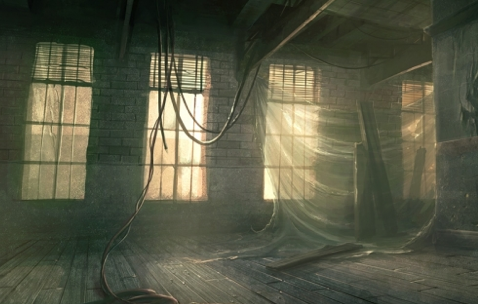
[3] A woman’s (or man’s) jealousy of her (or his) best friend takes over their life . Could link to ‘Othello’ or ‘Medusa’. Think about why. Start this when the woman is with her friend in a frenzy of jealousy…

[4] A model who has always been obsessed with her looks has acid splashed in her face and is disfigured. Could link to ‘Les Grands Seigneurs’, or ‘Mirror’ by Sylvia Plath. Start this with her looking in the mirror then opening her front door… By the way, this story is true. The woman in the picture is called Katie Piper .

[5] Fear of heights : nine year old with family who are in visiting a famous tall tower for the first time. The rest of her family want to go up the tower, but if the child won’t go up, someone will have to stay behind with them. Start this at the foot of the tower…
Want more ideas? Get a complete set plus a teaching scheme with model essays and all resources on my TES Resources shop here .
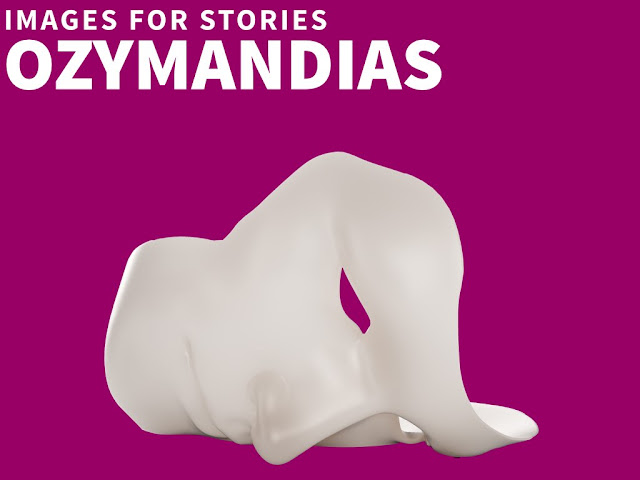
[6] Small child really wants cake but has been forbidden from taking it down from the shelf. Start this story with the child lusting after the cake, which you should describe – baking, decorating etc – in delicious detail. [ read a short, very funny version of this here ]

[7] A man is obsessed with a woman who does not love him back (or the other way round) . Could link to ‘Havisham’ by Carol Ann Duffy, ‘Give’ or ‘Alaska’ by Simon Armitage or ‘The River God’ by Stevie Smith . Start this when he realises she doesn’t love him back or when he decides to do something about it – get a haircut, stop eating raw onions, go to the gym, pretend that he also loves ‘horoscopes’ and ‘shopping’…

[8] Dangerous Ambition (links to Macbeth). Want the lead role in the school play (or to be head girl/boy)? What will you do to get it? Start this when you realise the lead is up for grabs but you’re not the first choice.

Racing Car driver (motorcross, road or drag racer) is up against his old teammate, now his main rival. Driver needs to win this one or it’s the end of his career. He sees that one of the mechanics on his rival’s car has fixed something up wrong. What does he do?

[9] Jealous woman (or man) chases husband (wife) to find out where they’re going. Could link to ‘Medusa’, ‘Havisham’, or ‘Othello’. Start this story when they decide to chase / follow. Use flashback, or recollection to explain why.
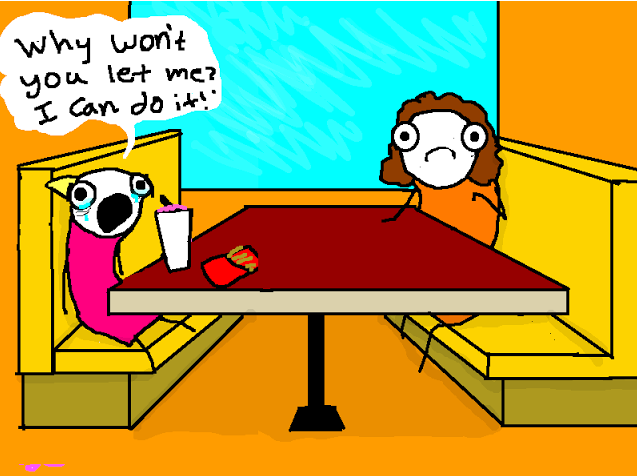
[10] Small child really wants to go to another child’s birthday party but there’s a problem. He has to go to his dad’s that weekend/hasn’t been invited/has to go to the dentist instead. How does he deal with or solve it? Start this story at the moment where the child realises he can’t go. [ read a short, hilarious one here ] III Lost

[11] An old man, who has never cooked or cleaned for himself, has just got home after his wife died (of old age, in hospital). You could link this to ‘Old Age Gets Up’ by Ted Hughes. Now he has to try to do housework – cook, etc. Could be comic / tragic.
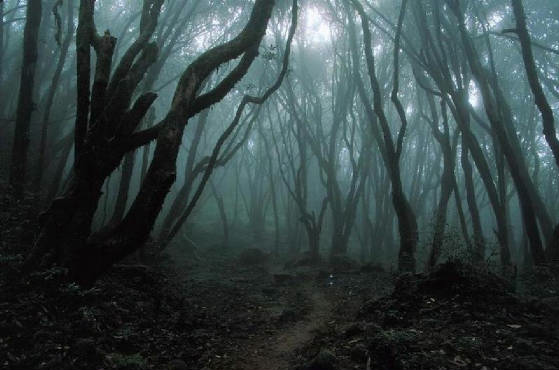
[12] You go for a forest walk (e.g. on a Geography trip or DofE) with someone you don’t like much from school and get lost. Could link to Robert Frost’s poem ‘The Road Not Taken’, ‘Storm in the Black Forest’ by D.H. Lawrence or ‘Wind’ by Ted Hughes. Start this story just before the main character begins to suspect they are lost. Start funny, ends up scary as it starts to go dark. Get describing words for a forest story here .

[13] Parent-Child: In a busy town centre, a mother loses her child who has previously been annoying her . Link this to ‘Mother A Distance Greater…’ by Simon Armitage, ‘Catrin’ by Gillian Clarke or ‘My Father Thought it Bloody Queer’. Start this with the child’s tantrum, mother’s thoughts then quickly move to realising the child is gone.

[14] World famous BMXer (or other sports person, footballer, skateboarder, surfer) is in a car crash – or other accident – and loses his leg. Will he ever ride again? This can link to ‘Out, Out-‘ by Robert Frost. For more on the guy in the photo see this video . Start this story when he wakes up in a hospital bed.

[15] A bsent father returns trying to spend time with his kids. How do they react to seeing him after so long? [this idea is done beautifully in the story, ‘Compass and Torch’ in the AQA anthology Sunlight on the Grass]. You could also link this to ‘Follower’ by Seamus Heaney. Start this when the re’s a knock at the front door.
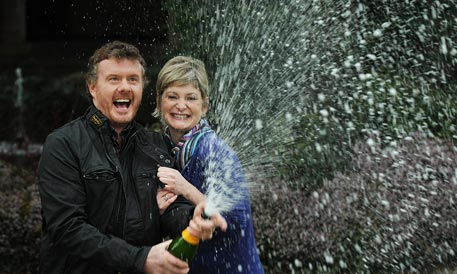
[16] You win a million pounds on the lottery. Everyone you know wants some. What would you buy? Friendships are ruined. Then you are robbed… Start this when you check your bank balance and there are sooooo many noughts at the end it looks like a bank malfunction. IV Coming of Age

[17] Death of a pet. Ferociously funny, very short story about a girl and a fish [ here ]. Start this when you find the pet… dead, or just before. You can use flashback – when you first got the pet, etc.
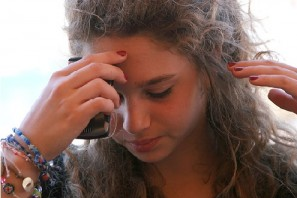
[18] Learning a secret you wish you’d never found out – e.g. finding texts on your dad’s mobile from his girlfriend while your parents are still married – or learning that your mum is planning to secretly leave your dad. Start this when you’re just idly messing with the parent’s phone or laptop.
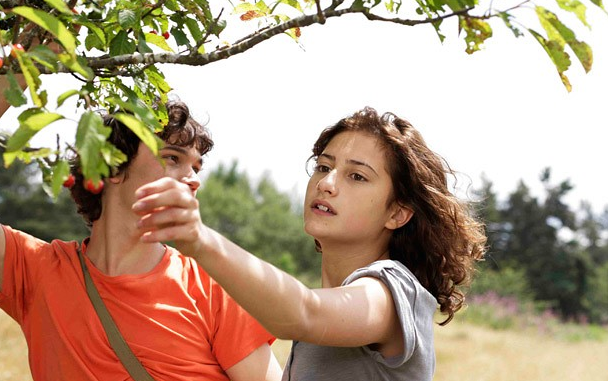
[19] falling in love for the first time , as in Romeo and Juliet. Start this when they see each other or their first proper meeting. Link this to ‘Sonnet 18 Shall I Compare Thee’, ‘Sonnet 116 Let Me Not’, ‘Quickdraw’ or ‘Hour’, by Carol Ann Duffy or ‘To His Coy Mistress’ by Andrew Marvell.
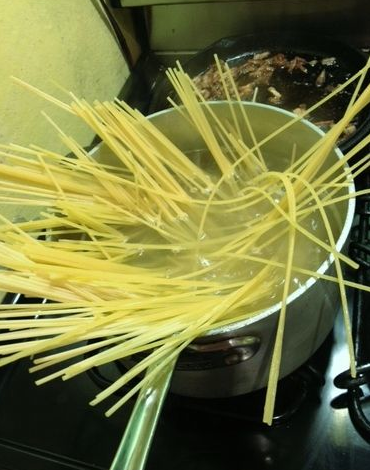
[20] The first time you have to do a really disgusting piece of housework / cook a meal for yourself and how you tackle it. Start this when you realise that no one else is going to do this foul job except you. Read a description of cooking a meal here .
V The Chase / Monsters

[21] You’re camping with your friend in the woods. Then you hear a noise outside (wolves, person, etc). Start this as you’re getting settled to go to sleep – then you hear snuffling (or whatever). Read Bill Bryson’s hilarious account of this exact event, and also an account of surviving a bear attack from the OCR exam paper here.
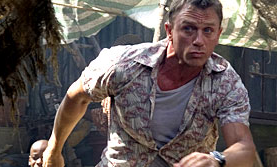
[22] You have something someone else wants – gold, diamonds etc. They chase you to get it. You choose the landscape: city, ruined derelict warehouses, Brazil, forest, cliffs etc. Start this at the moment you realise someone is following you. You can link this to the final chapter of Lord of the Flies .

[23] You are the last surviving human after the zombie/vampire apocalypse. Now they have found you. This is the plot of ‘I Am Legend’. You can link this to Edwin Muir’s post-apocalyptic poem ‘Horses’, ‘Wind’ by Ted Hughes or the final chapter of Lord of the Flies . Start this at the moment you (or the main character) realises someone is coming towards your hiding place.
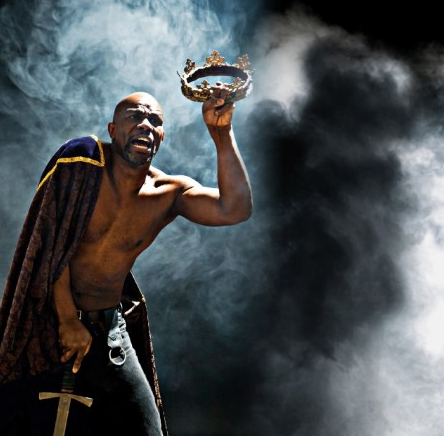
[24] The King is a tyrant who has killed your family. Now you will take revenge . Start this story as you are just about to go through the city walls.
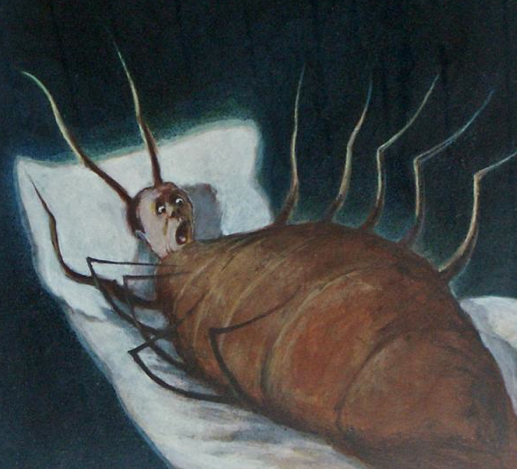
[25] You wake up and discover you have been turned into a giant insect. How does your family react? This is the plot of Kafka’s Metamorphosis. Read this here . Start at the point you wake up, and gradually realise what has happened.
Submit a Comment Cancel reply
Your email address will not be published. Required fields are marked *
Save my name, email, and website in this browser for the next time I comment.
Recent Posts
- Example English Literature Essays For Oxbridge Applications and Coursework
- What is Pathetic Fallacy? Simple Explanation for GCSE, IGCSE, and Common Entrance
- Writing to Describe Photographs of Interesting Places
- Storm on the Island Heaney: Context, Interpretation and Annotation Analysis
- The Prelude, Wordsworth: Context, Analysis, Annotation and Likely Exam Questions GCSE Poetry Exam
Recent Comments
Resources you can trust
Pictures for descriptive writing
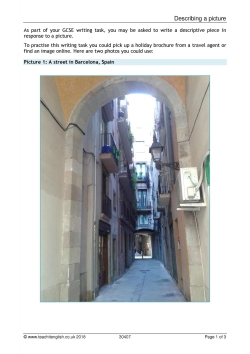
This helpful resource is designed to prepare students for GCSE English Language writing questions, particularly descriptive writing tasks inspired by picture prompts.
Included with the resource are two images to support students in their creative writing activities and to help them develop their descriptive writing skills in preparation for their studies and for final examinations.
The resource contains a series of image prompts for young writers and a range of relevant techniques which can be used as the basis for a writing lesson or as ways in to strengthen student writing capabilities.
In addition, the resource includes an example task which encourages students to plan their answer to creative writing activities.
Browse additional descriptive writing resources in the GCSE English Language writing skills section.
A sample extract from the resource:
Tips for descriptive writing from an image:
- Comment on the atmosphere of the photo. In picture 1, it’s quiet and secluded.
- Approach the picture from top to bottom. In picture 1, start with the brightness of the sky and move down to describe the stones of the walls, the arch, balconies, streetlights and so on.
- Use a range of sentence structures. Make some long and complex, and use shorter ones for impact. Vary paragraph length too – it makes your writing seem confident if you can use structure, as well as language, to convey your meaning. So if you were describing the fairground in picture 2, you could write:
The fairground was irresistible. Flags fluttered between the azure helter-skelter and the sunshine-yellow Ferris wheel; it was as if the warm breeze was inviting us to surrender ourselves to the simple pleasure of twirling and spinning on this perfect summer’s day.
All reviews
Have you used this resource?
Rosalind Tucker
Majella Cocks
Resources you might like
Miss Britton
11 Intriguing Images for Creative Writing
~ 27th April 2020 ~
“A picture paints a thousand words.”
And a picture can, without a doubt, inspire a student to write 1000 words. In this journal entry, I want to share with you some fascinating photographs that can be used as writing prompts. These intriguing images can spark endless trains of thought and countless questions, leading to some top-notch creative writing.
I suggest using the images to ignite your pupils’ imaginations and provide an opportunity for an extended piece of writing. Ask them to generate their own questions about the images or provide them with question prompts to help them to mind-map their thoughts and ideas. Using visual stimuli can certainly help children to build their vocabulary and improve their use of descriptive language .

Use the button below to share these intriguing images with others.
Image credits to: Joan Verstuyft , Tom Cash , Thomas Kelley , Fred Kearney , Kevin Noble , Matt Artz , Rene Asmussen , John-Mark Smith , Snapwire , Gratisography
Continue Reading
8 literacy activities based on the bfg.
18th August 2016
With the release of the new Steven Spielberg big screen adaptation of Roald Dahl's 'The BFG', I thought it apt to share with you some of my favourite BFG resources for teaching English.
Activities for Children at Home (Part 4): English
21st March 2020
Today's entry to the series focuses on English activities and ideas. I hope to provide you with a wide range of educational suggestions to keep your children occupied while they are at home.
About the Author

Julianne Britton is an experienced teacher and author. Having taught across KS1 and KS2 and after just 3 years, she was promoted into leadership and given the responsibility of 'Science and Computing Coordinator'.
Specialising in 11+ entrance exams and SATs preparation, she has also worked as a private tutor, successfully supporting the education of 50+ students and, in addition to writing for CGP Books and Teach Primary magazine, Julianne also publishes educational resources for teachers on TES.
Julianne is also a member of MENSA.
Get in touch via [email protected] , Twitter or LinkedIn .
As Featured In


5 Image-based Descriptive Writing Prompts
Need a better way to practise writing? Below, you’ll find 5 image-based descriptive writing prompts which are a great way to go!
If you’re studying creative writing, you’ve probably heard of them and might have even used them by now! If you’re a non-fiction writer or just an everyday writer, especially if you’re just getting started, this might be a new thing for you – but it is definitely a thing!
Every writer gets inspiration from different sources. It could be a neighbour, a friend, a local event, a tragedy, a painting, or even music and a particular song. It’s the same with images and photos – it can spark your creativity in no time!
Before we get into how image-based descriptive writing works and give you a couple of assignments, make sure you check our online English school where you can find courses like these:
Basic Descriptive Writing
Advanced Descriptive Writing
AQA GCSE English Language Paper 2
How to use image prompts for writing:
- Take a good look at the image.
An interesting photo, or the one that is deceptively simple – is an inspiration. This could literally be any photo that catches your eye – whether you found it online or in your personal belongings.
- Take a few moments to absorb the details in the photo.
What is the main focal point? Is it the background or foreground? What about colour, light, and all other small details?
- Allow your senses to experience the photo and at the same time allow words to form in your head.
A story might start, whether it is just a couple of sentences or a few words. Try imagining you’re explaining that same photo to a friend, but the friend is unable to see it – what would you say to them?
- Start writing, whether words form in your mind or not.
In journalism, there is a “Five W’s + H” rule, meaning that you should answer these questions: who, what, when, where, why and how, and it can be really helpful if you don’t know where to start as this gives you a direction to follow.
- What comes to mind for you will be completely different from others as it’s based on your own experience and beliefs.
So, keep on writing and then edit later – it all depends on your purpose. If you think you’re onto something, keep going, see how the story develops. But even if you set it aside for another time, it’s a never wasted effort.
Task: What can you see? What do you think has happened/is happening/will happen? Where did the house come from? How do you think it got here? Why is it surrounded by all of the bricks? Who is the woman inside the house? Why is she looking out of the window? What might she be thinking?
There are so many ways to practise and improve your writing, so check our post on Descriptive Writing Prompts to get more ideas!
Task: Using the image above as an inspiration, write a creative piece in which you describe a day in nature.
Task: Who is this girl? How old is she? What is she doing, alone, in a cafe? Who do you think she’s texting? Does she look sad, or happy, or worried to you?
Task: You’re sitting across this building. Imagine and create a life for a couple of people living there.
For the last task, pick a random photo from your phone or a computer; some that you’re fond of and describe what it is about.
Do you want some tips on how to write more vividly? Check out this post that has all the answers you’re looking for!
Thanks for reading! If you found this useful, check our online English Language and Literature school where you can find a variety of courses that will help you enhance your English skills and grades!
Related Posts

The Theme of Morality in To Kill A Mockingbird

Unseen Poetry Exam Practice – Spring

To Kill A Mockingbird Essay Writing – PEE Breakdown

Unseen Poetry Exam Practice: The Man He Killed

How to Get Started with Narrative Writing

What do I need to do for AQA Language Paper 2?

How to do well in the AQA GCSE Paper 2 Exam!

How to Write a Perfect Essay on The Crucible by Arthur Miller

AQA Power and Conflict: Example A* / L9 Grade Paragraph

Descriptive Writing: The train
© Copyright Scrbbly 2022
- International
- Schools directory
- Resources Jobs Schools directory News Search

54 X Creative Writing Stimulus Picture Flash Cards. English Language GCSE. KS3 / KS4 Writing Prompts
Subject: English
Age range: 14-16
Resource type: Worksheet/Activity
Last updated
8 February 2024
- Share through email
- Share through twitter
- Share through linkedin
- Share through facebook
- Share through pinterest

54 Flash card prompts which will help to spark your learners’ imaginations.
These flash cards contain pictures from a number of different fictional genres: gothic, western, sci-fi, historical, romance, modern and fantasy.
Instructions: Print out the cards double sided. One side will have the picture prompts on and the other a zig zag pattern. Cut the cards out and laminate them. Get your learners to pick one card each and write a story or description by using the pictures as a stimulus.
Tes paid licence How can I reuse this?
Your rating is required to reflect your happiness.
It's good to leave some feedback.
Something went wrong, please try again later.
This resource hasn't been reviewed yet
To ensure quality for our reviews, only customers who have purchased this resource can review it
Report this resource to let us know if it violates our terms and conditions. Our customer service team will review your report and will be in touch.
Not quite what you were looking for? Search by keyword to find the right resource:

Miss Huttlestone's GCSE English
Because a whole class of wonderful minds are better than just one!
2 Grade 9 Creative Writing Examples
I recently asked my year 11s to pen a piece of description and/or narrative writing for their mini assessment. I gave them the following prompts:
Your school wants you to contribute to a collection of creative writing.
EITHER: Write a short story as suggested by this picture:
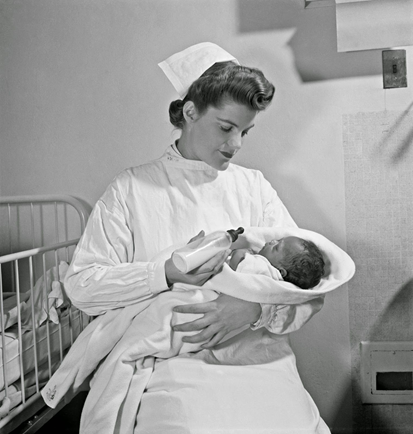
OR: Write a description about a person who has made a strong impression on you.
The following were two COMPELLING and CONVINCING examples of the second choice – one pupil taking ‘you’ as a fictional invitation, the other as a biographical one:
EXAMPLE ONE:
Gradually, I awake and open my eyes only to see the cracked white ceiling which greets me every day. Here I sit, slumped in the bed with the scratchy white sheets hugging me and muffled beeping noises jumping into my ears. Rubbing the sleep crust from my bloodshot eyes, I observe the scene before me. The sound of footsteps overlapping as nurses rush from bed to bed; the metallic tang from stainless steel invading my nostrils; the cold metal bed rail imprisoning and mocking me; the pungent scent of antiseptic troubling me and the blood-curdling cries and moans utterly terrifying me. Using all my strength, I try to imagine I am somewhere else, anywhere else but here.
Crowds, signs, roars: it was 1903 and the suffragette movement had begun. It was a crisp night, refreshing almost and I had taken to the streets. It was like I was possessed by something that night, some urge and deep desire within me that had led me there, surrounded by women like myself. I stood clueless and lost in the crowd; the women yelling ‘Deeds not words’ in unison; passionately parading with large wooden signs and viciously shattering windows with bricks and stones. Despite the violence that was displayed before me, I was not afraid of what was happening and I didn’t deem it unnecessary or improper, in fact I wanted the same as these women, I wanted equality. Abruptly, all of the roars and cheers became muted and faint, one woman walked slowly towards me, her hair messily swooped into an updo, her clothes somewhat dirtied and her chocolate brown corset slightly loosened. There was a glimmer in her eyes as tears seemed to swell within their hazel pools, she seemed inspired, hopeful. After reaching me in the crowd, she held out her hand, gently passing me a sign. Immediately, I clasped it and the yelling and chanting rang loudly in my ears once more. My journey had begun.
Here however, is where it ends. I am aware I do not have much time left, as the doctors have told me so, and spending my last moments in this hospital room is not optimal. However, as I look around I can see beauty within a room which at first glance seems void of it. The hollow medical tubes by my side remind me of the awful act of force feeding I have faced in the past; the shrieks and bawls of patients reflecting the pain women had felt in my time and the bed bars mirroring the prisons we were thrown into and the gates we would chain ourselves too. I know these things may seem far from beautiful, but I can see my past within this room, the power I possessed and the changes I have contributed to today. I know now that I can leave this earth having had an impact. Slowly I close my eyes, I can see her, the women who changed my life many years ago, her name, Emmeline Pankhurst.
EXAMPLE TWO:
I will never forget that day. The hazel pools of her eyes glazed over, and hands delicately placed at her sides. Nobody in the room could quite grasp the fact that this was happening. The crowds of black attire row on row seemed to mimic the thing she loves most in life, the piano. However, this time she had taken the ivory natural keys with her and left everyone else with the sharp tones. You needed both to create beautiful symphonies but all that filled the room was the excruciating silence of her absense. Even the metronone like ticks of the clock seemed to come to a standstill.
It had all began that day, she seemed to open up this whole new world for us to explore together as she placed my fingers onto the keys for the first time. I knew that this was what I was meant to do. She was the most passionately beautiful pianist I had ever seen in my life. Often, I would peer round the oak doorway before my lessons just to catch a glimpse at her. It seemed like nothing in the world mattered to her at the time.
As the years progressed, so did the scope of this world we were exploring. Each sheet of lovingly handwritten sheet music was like a new section of the map we were slowly creating together. Each of her students had their own map. Each as beautiful and each as unique as the pianist. The crotchets and quavers that adorned the staves directed the different paths we could take as my fingers graced the keys. This may not have been a beautiful ballet routine, but this was our dance and it had been carefully choreographed just for us.
That piano room was the safest place in the world. Every inch of it her: the potent scent of her floral perfume; shelves full of scruffy and well loved sheet music; rows upon rows of framed photos of her and her students; the vintage piano which she always kept in tune, it was home. I couldn’t bear the
idea that someone else was going move in and rip away the music room without a second thought. It was her music room.
It was up to me now. Up to me to finish this journey we had begun together.
She may not be with me in person anymore, but she will always live within the world we built together and nothing could ever change that. For she could never truly be gone since she left a piece of her within every one of her students; the passion for piano.

Share this:
Published by.
gcseenglishwithmisshuttlestone
Secondary English teacher in Herts. View all posts by gcseenglishwithmisshuttlestone
2 thoughts on “2 Grade 9 Creative Writing Examples”
This has helped me a lot, I myself am preparing for a narrative test like this and these prompts and descriptive short stories are marvellous! Thank you for sharing this! 🙂
My pleasure!
Leave a comment Cancel reply

- Already have a WordPress.com account? Log in now.
- Subscribe Subscribed
- Copy shortlink
- Report this content
- View post in Reader
- Manage subscriptions
- Collapse this bar

IMAGES
VIDEO
COMMENTS
Unit 2 Reading and Writing: Description, Narration and Exposition gives two prompts to choose between, for an account and an essay perhaps, and Unit 3: Reading and Writing: Argumentation, Persuasion and Instructional sets up a letter, or similar. Jump ahead to WJEC Eduqas non-fiction writing prompts from past GCSE papers.
Now we're rounding up years of these storytelling prompts all in one place. Below you'll find 125 photos, illustrations and GIFs from across The New York Times that you can use for both ...
Pictures make a fun alternative to your typical writing prompts and story starters and can help shake up your regular routine. How to Use Picture Prompts for Creative Writing. There's no limit to the ways you can use writing prompts. Here are some of our favorite ways to incorporate image prompts into your weekly lesson plans. Writing Center.
This booklet is to support your creative writing practice in preparation for your GCSE Language exam. There are two papers: Paper 1 and Paper 2. In Paper 1, the last ques-tion is 40 marks. It will ask you to write either a description as suggested from a picture, or a short story. 24 of these marks are for the ideas you put on the page. 16 of these
Image Prompts - Descriptive Writing - Language Paper 1, Q5. A set of 15 images each with adjectives, verbs, descriptive techniques and sentence starters to use. All images found via a Google image search and belong to their respective owners. Report this resource to let us know if it violates our terms and conditions.
Retold Fable. Prompt: Modernize a classic fable or story, such as the Boy Who Cried Wolf, in a contemporary setting. Potential Story Directions: The story could be set in a modern city, exploring current social issues. It might be told from a different perspective, offering a fresh take on the moral of the story.
Write a short story, poem or memoir inspired by this illustration. Related Picture Prompt Glenn Harvey. Trapped Inside. Wilderness Wayfaring. Magical Chores. I'm Sorry. Dollar Bills. Dinosaurs ...
A checklist of techniques which create effective descriptive writing, followed by a series of eight images for students to use as inspiration for a creative writing task. Designed for the AQA English Language GCSE, these photographs are ideal for practising writing in response to a picture prompt. The images include: a ship. A PowerPoint ...
Slow your writing down. Both of these writing prompts are great for s-l-o-w writing. Slow writing is the opposite of a quick write. The idea is to write slowly, precisely, carefully, selecting each word intentionally. Slow writing can take 5 minutes with one sentence and 30 minutes with a paragraph. Write these moments of action (or inaction ...
Below, we've categorized the 160+ prompts we published during the 2016-17 school year based on the type of writing they primarily encourage students to do. All are still open for comment. Plus ...
II. Desire. [6] Small child really wants cake but has been forbidden from taking it down from the shelf. Start this story with the child lusting after the cake, which you should describe - baking, decorating etc - in delicious detail. [ read a short, very funny version of this here]
This helpful resource is designed to prepare students for GCSE English Language writing questions, particularly descriptive writing tasks inspired by picture prompts. Included with the resource are two images to support students in their creative writing activities and to help them develop their descriptive writing skills in preparation for ...
11 Intriguing Images for Creative Writing. "A picture paints a thousand words.". And a picture can, without a doubt, inspire a student to write 1000 words. In this journal entry, I want to share with you some fascinating photographs that can be used as writing prompts. These intriguing images can spark endless trains of thought and ...
How to use image prompts for writing: Take a good look at the image. An interesting photo, or the one that is deceptively simple - is an inspiration. This could literally be any photo that catches your eye - whether you found it online or in your personal belongings. Take a few moments to absorb the details in the photo.
A set of 22 vivid photographs to be used as inspiration for descriptive, narrative or discursive writing. The pictures are open to interpretation and can be used in multiple ways. The resource includes a brainstorming template for students to use to organise their initial ideas. The download includes both a PPT and PDF version of the images and ...
#22 CREATIVE WRITING PROMPT Use the picture to write a story which starts like this: My pet is rather strange #21 CREATIVE WRITING PROMPT Continue this opening with a poem, story or any type of writing you like! It can be based on your own life or entirely made-up!
that make the very best creative writing, in the form of narratives or descriptions, come alive. You will look at how writers create convincing, compelling voices that draw us into their world. You will explore the ways in which writers address powerful ideas about the way we live, or our place in the world. You will also see how
pdf, 1.72 MB. These questions are suitable for students and writers of all levels; they are intended to help individuals to explore a range of possible scenarios and environments. They are tailored towards GCSE AQA English students, but suitable for other GCSE and iGCSE exam boards. This digital + printable pdf resource includes the following:
The style of the writing (sentence structure and overall structure) is dynamic and engaging; Below you will find a detailed creative writing model in response to an example of Paper 1 Question 5, under the following sub-headings (click to go straight to that sub-heading): Writing a GCSE English Language story; Structuring your story
Put your GCSE English Language students to the test with our Writing a Prompt lesson, the eighth in our series of Creative Writing lessons. In this lesson, students are tasked to plan short stories based on picture prompts with plenty of guidance. This is a great way to monitor how well students are progressing and highlight any potential areas worth revisiting. Take a look at our Writing to ...
54 Flash card prompts which will help to spark your learners' imaginations. These flash cards contain pictures from a number of different fictional genres: gothic, western, sci-fi, historical, romance, modern and fantasy. Instructions: Print out the cards double sided. One side will have the picture prompts on and the other a zig zag pattern.
Narration - the voice that tells the story, either first person (I/me) or third person (he/him/she/her). This needs to have the effect of interesting your reader in the story with a warm and ...
2 Grade 9 Creative Writing Examples. I recently asked my year 11s to pen a piece of description and/or narrative writing for their mini assessment. I gave them the following prompts: Your school wants you to contribute to a collection of creative writing. EITHER: Write a short story as suggested by this picture: